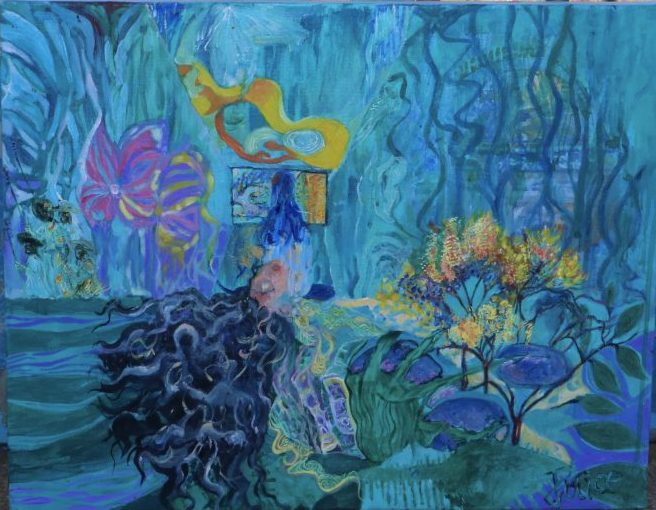Gaze
The reason why I am being procrastinated on this Bechdel Zine is because I find a bit disconnected to this topic and I have not done any projects related to female gaze and male gaze. I think I am more interested in composing orchestral pieces… Dont blame me TAT
My current thoughts and reviews:
This scholarly article examines the notions of queerness and the female gaze within David Kaplan’s 1997 short film, “MUBI RIDING HOOD.” It posits that the film deviates from conventional interpretations of fairy tales and challenges normative concepts of gender and sexuality, thereby inciting understandings of queerness and sexual identity.
Queer reading serves to disrupt binary oppositions, such as male and female, active and passive, straight and gay. It rejects rigid definitions and encourages diverse and contradictory interpretations. In the case of “MUBI RIDING HOOD,” the film undermines the heteronormative portrayal of the story as one involving a male predator preying upon a passive female victim.
The film introduces visual and linguistic variations when compared to the traditional rendition of the tale. It depicts a girl who has never encountered a wolf and subsequently transforms into a grandmother who willingly dines with wolves. The girl follows the wolf’s instructions to undress and engages in a flirtatious striptease, while the wolf reciprocates with an erotic interaction, evoking the famous line “Your mouth is so big.” However, deviating from the conventional narrative, the girl rejects the wolf’s advances and flees, leaving him to mourn her departure.
The article highlights the significance of the characters of the wolf and the grandmother in destabilizing heterosexuality. The image of the wolf is associated with the androgynous and sexually curious depictions of Vaslav Nijinsky, a renowned early 20th-century dancer whose sexuality was an integral part of his identity. The film draws upon Nijinsky’s ballet “L’Après-midi d’un faune” and its dreamlike eroticism. By incorporating Nijinsky’s associations, the film challenges conventional notions of gender and sexual identity.
In other words, “MUBI RIDING HOOD” presents an unconventional and eccentric interpretation of the fairy tale. It disrupts normative expectations, embraces diverse sexualities and genders, and encourages viewers to explore alternative readings that transcend traditional depictions of gender and sexuality.
The male gaze – the heterosexual male perspective that directs our art and culture, refers to the way in which a film’s camera and story structure are aligned with the perspective of a heterosexual male audience. Female characters are materialised and sexualized in this, frequently serving as passive objects of desire for male protagonists or viewers. Women were considered as objects and asked to adhere to standards in the male gaze of the past. Movies frequently depict women as sexual objects in the eyes of straight men because of this. Auditory components can also encourage the amplification or thickening of the male gaze when the male gaze extends to the sound field. Sound design in films has a crucial role in influencing how the audience experiences and perceives characters and their behaviour.
And the female gaze, “The Female Gaze” shows the world through the eyes of a woman. As Alicia Malone writes in the introduction to The Female Gaze: Fundamental Films Made by Women:
Female in film, the female gaze covers the power of a genre traditionally dominated by men, the concept of the female gaze in film is not the opposite of the male gaze, and is a representation and perspective that emphasizes women as subjects rather than passive objects of desire.
In terms of sound in film, the female gaze can be achieved through:
Dialogue and voiceover. It also means that the way the female gender speaks and the way their voices manifest can challenge traditional gender stereotypes, using user dialogue and vocal idiosyncrasies to move away from monotony in their relationship to the male gender.
The choice of soundtrack and music can show the emotional history and inner world of the female characters to show their perspective. Music can enhance their strength, resilience or lengthen a person instead of just adjusting her gender and personality traits.
Additionally, the use of sound effects can facilitate the female gaze by capturing the perceived official experience and perspective of female gender. This can touch on sudden sounds of evocative, intimacy, or personal connection that allow the audience to connect with angles on a deeper emotional level.
The Air Surround design of the environment can be used to describe the female experience and environment, making it resonate with the female light. A sense of immersion can be created through the movement and details of the environment around the body.
The key areas for the male gaze and female gaze in Sound of Film are perspective and representation of angles, respectively. The goal of the female gaze is to present women as complex individuals with mechanisms, wishes and opinions of their own, rather than to reduce them to objects of desire or to be moved by the male gaze. Emphasis is on creating a representation of a package and diversity of women’s experiences and perspectives.
